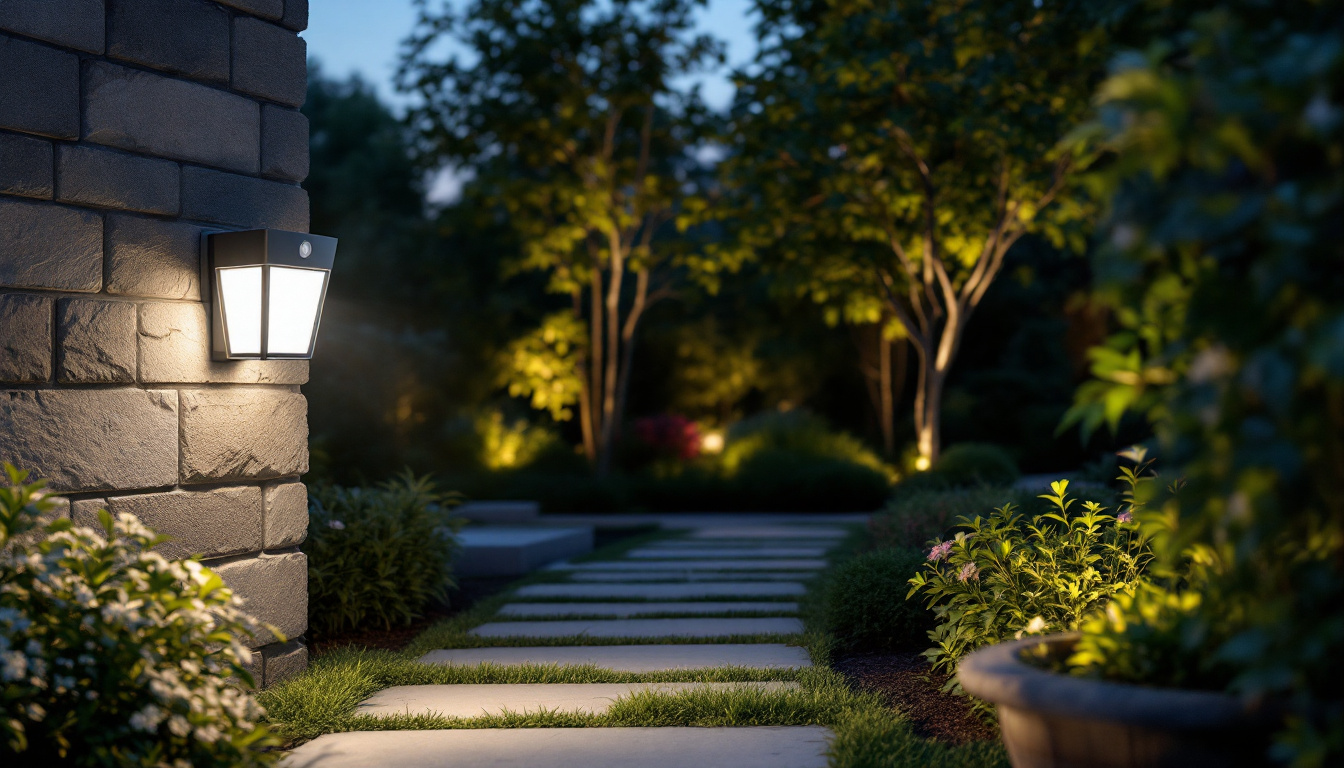
In the realm of modern construction and design, smart lighting has emerged as a pivotal element that enhances functionality, aesthetics, and energy efficiency. The integration of technology into lighting solutions not only transforms spaces but also elevates the role of lighting contractors. As the demand for innovative lighting solutions grows, understanding the various approaches to smart lighting becomes essential for contractors aiming to stay competitive in the market.
Lighting technology has undergone significant transformations over the years. From incandescent bulbs to LED fixtures, and now to smart lighting systems, the evolution reflects a broader shift towards sustainability and efficiency. Smart lighting systems utilize sensors, automation, and connectivity to create adaptable environments that respond to user needs and preferences.
As a result, lighting contractors must familiarize themselves with the latest advancements in technology. This includes understanding how to integrate smart systems into existing infrastructures, ensuring compatibility with various devices, and leveraging data analytics to optimize lighting performance.
Moreover, the rise of smart lighting has been fueled by the increasing prevalence of the Internet of Things (IoT), which allows for seamless communication between devices. This connectivity not only enhances user experience through features such as remote control and scheduling but also promotes energy conservation by enabling systems to adjust based on occupancy and natural light levels. For contractors, this means staying updated on IoT protocols and security measures to protect user data and ensure reliable system performance.
Additionally, the design aspect of smart lighting cannot be overlooked. The ability to customize lighting schemes to suit different moods and activities has opened up new avenues for creativity in both residential and commercial spaces. Lighting contractors are now tasked with not only implementing these advanced systems but also collaborating with architects and interior designers to create cohesive environments that reflect the client’s vision while maximizing the benefits of smart technology. This collaborative approach is essential in delivering solutions that are not only functional but also visually appealing, thereby enhancing the overall user experience.
For lighting contractors, adopting a strategic approach to smart lighting is crucial. This involves understanding the various methodologies that can be employed to deliver effective solutions tailored to client needs. Here are some key approaches that can be utilized:
One of the most significant advantages of smart lighting is the ability to customize and personalize lighting settings. Contractors can work closely with clients to understand their specific requirements and preferences. This may involve creating tailored lighting schemes that enhance the ambiance of a space while also addressing functional needs.
For instance, in residential settings, homeowners may desire different lighting scenes for various activities—bright, focused lighting for reading, and softer, warmer tones for relaxation. By leveraging smart technology, contractors can install systems that allow users to easily switch between these settings, enhancing the overall user experience. Additionally, the integration of mobile apps enables users to control their lighting remotely, providing convenience and flexibility that aligns with modern lifestyles. This adaptability not only meets the immediate needs of clients but also anticipates future demands as their preferences evolve.
As sustainability becomes a priority in construction and design, smart lighting systems offer a pathway to significant energy savings. By utilizing sensors and automation, these systems can adjust lighting levels based on occupancy and natural light availability. This not only reduces energy consumption but also lowers utility costs for clients.
Lighting contractors can play a vital role in educating clients about the long-term benefits of energy-efficient lighting solutions. By presenting case studies and data on energy savings, contractors can help clients make informed decisions that align with their sustainability goals. Furthermore, the use of LED technology in smart lighting systems not only contributes to energy efficiency but also has a longer lifespan compared to traditional bulbs, reducing waste and the frequency of replacements. This holistic approach to sustainability can significantly enhance a contractor’s reputation as a responsible and forward-thinking professional in the industry.
With the rise of smart home technology, integrating lighting systems with other smart devices has become increasingly important. Contractors should be well-versed in various smart home platforms and how lighting can seamlessly fit into these ecosystems. This includes compatibility with devices such as smart speakers, thermostats, and security systems.
By offering integrated solutions, contractors can enhance the functionality of lighting systems, allowing users to control their environment through a single interface. This not only simplifies the user experience but also positions contractors as knowledgeable experts in the smart home arena. Additionally, the ability to create automated routines—such as having lights dim at a certain time or turn on when someone enters a room—adds an extra layer of convenience and security. As smart home technology continues to evolve, staying updated on the latest trends and innovations will empower contractors to provide cutting-edge solutions that meet the growing demands of tech-savvy clients.
While the benefits of smart lighting are clear, there are also challenges that contractors may face during implementation. Understanding these challenges is essential for developing effective strategies to overcome them.
The rapid pace of technological advancement means that lighting contractors must continuously update their knowledge and skills. This can be a daunting task, especially for those who may be accustomed to traditional lighting systems. Investing in training and education is crucial for staying competitive and providing clients with the best possible solutions.
Contractors can seek out workshops, online courses, and industry certifications that focus on smart lighting technologies. By building a solid foundation of knowledge, contractors can confidently navigate the complexities of smart systems and offer valuable insights to clients.
Many clients may not fully understand the capabilities and benefits of smart lighting. This lack of awareness can lead to hesitation in adopting new technologies. Lighting contractors must take on the role of educators, explaining the advantages of smart systems and how they can enhance both residential and commercial spaces.
Providing clients with demonstrations, visual aids, and real-world examples can help bridge the knowledge gap. By showcasing the practicality and efficiency of smart lighting, contractors can foster greater acceptance and enthusiasm for these innovative solutions.
Budget considerations often play a significant role in the decision-making process for clients. While smart lighting systems can offer long-term savings, the initial investment may deter some clients. Contractors must be adept at presenting the value of smart lighting in terms of both immediate benefits and future savings.
Offering tiered solutions that cater to various budgets can also be an effective strategy. By providing options that range from basic smart lighting features to more advanced systems, contractors can accommodate different financial situations while still promoting the advantages of smart technology.
The landscape of smart lighting is continuously evolving, driven by advancements in technology and changing consumer preferences. Staying informed about future trends is essential for lighting contractors who wish to remain at the forefront of the industry.
The Internet of Things (IoT) is set to revolutionize the way lighting systems are designed and implemented. As more devices become interconnected, lighting contractors will have the opportunity to create comprehensive ecosystems that enhance user experience.
This connectivity allows for greater automation and control, enabling users to manage their lighting through smartphones, voice commands, and even artificial intelligence. Contractors should explore IoT solutions that can be integrated into their lighting designs, ensuring they are prepared for the future of smart technology.
As awareness of the impact of lighting on health and well-being grows, smart lighting solutions that prioritize human-centric design are gaining traction. This involves creating lighting environments that mimic natural light patterns, promoting better sleep, productivity, and overall well-being.
Lighting contractors can leverage this trend by incorporating tunable white lighting and circadian rhythm lighting into their designs. By emphasizing the health benefits of smart lighting, contractors can appeal to clients who prioritize wellness in their living and working environments.
Data analytics is becoming increasingly important in the realm of smart lighting. By collecting and analyzing data on lighting usage, contractors can provide valuable insights to clients, helping them optimize their lighting systems for efficiency and effectiveness.
Contractors should consider implementing data-driven solutions that allow for real-time monitoring and adjustments. This not only enhances the performance of lighting systems but also positions contractors as forward-thinking professionals who leverage technology to deliver superior results.
The world of smart lighting presents exciting opportunities for lighting contractors. By embracing innovative approaches, understanding the challenges, and staying informed about future trends, contractors can position themselves as leaders in the industry. The integration of smart technology into lighting solutions not only enhances functionality and aesthetics but also contributes to sustainability and energy efficiency.
As the demand for smart lighting continues to grow, contractors who prioritize education, customization, and integration will be well-equipped to meet the evolving needs of their clients. Ultimately, the monument of light is not just about illuminating spaces; it’s about creating environments that enhance the quality of life for individuals and communities alike.
Ready to elevate your lighting projects and become a leader in the smart lighting industry? Look no further than LumenWholesale for all your lighting needs. We provide contractors with the highest quality, spec-grade lighting products at prices that can’t be beaten. Say goodbye to local distributor markups and hello to superior products that meet the strictest industry standards. With our hassle-free bulk buying and free shipping, you can ensure your projects shine bright while keeping costs low. Don’t compromise on quality or value—Wholesale Lighting at the Best Value is just a click away. Transform your spaces and enhance the quality of life for your clients with the help of LumenWholesale.

Discover how motion sensing outdoor lights can revolutionize your home’s energy efficiency.

Discover how outdoor solar porch lights are revolutionizing the work of lighting contractors by offering eco-friendly, cost-effective, and easy-to-install solutions.

Explore the essential power tools for lighting contractors in this insightful article.

Discover essential tips from lighting contractors on maximizing the efficiency of outdoor dawn-to-dusk lights.